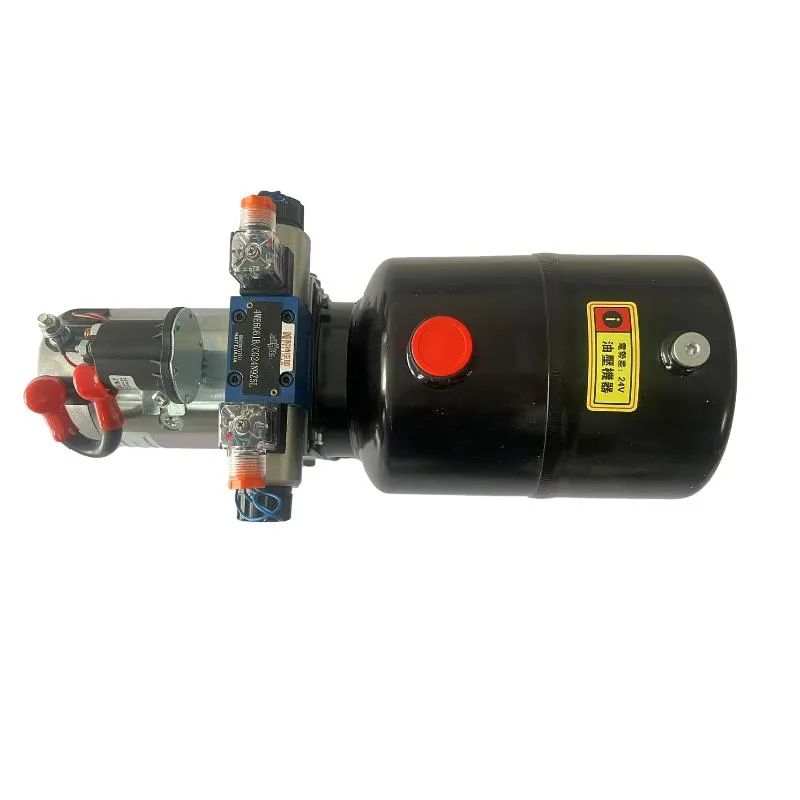Dec . 21, 2024 19:53 Back to list
parts for hydraulic cylinder product
Understanding Hydraulic Cylinder Components A Comprehensive Guide
Hydraulic cylinders are essential components in various industrial applications, ranging from construction equipment to manufacturing machinery. They convert hydraulic energy into mechanical force, enabling powerful and precise movements. Given their critical role, understanding the various parts of a hydraulic cylinder is vital for maintenance, repair, and performance optimization. This article will outline the key components of a hydraulic cylinder, their functions, and considerations for selecting suitable parts.
Key Components of Hydraulic Cylinders
1. Cylinder Barrel The cylinder barrel is the main body of the hydraulic cylinder. It houses the piston and contains hydraulic fluid under pressure. Typically made of steel or aluminum, the barrel must be robust enough to withstand high pressures and operating conditions without deformation.
2. Piston The piston is a crucial component that moves inside the cylinder barrel. It divides the cylinder into two chambers the rod side and the cap side. As hydraulic fluid is forced into these chambers, the piston moves, creating the linear motion required for various applications. Piston design varies depending on the application, and it may feature rings or seals that ensure fluid does not leak past it.
3. Rod The rod is an extension of the piston that transmits the generated force to the external load. Made from high-strength steel, the rod must be resistant to bending and wear since it is directly exposed to the load's stress. The rod's surface finish is also crucial to minimize friction and prevent damage caused by contaminants.
4. End Caps Hydraulic cylinders have end caps at both ends of the barrel, securing the piston and rod in place while allowing hydraulic fluid to enter and exit. These caps are typically designed to withstand high pressures and are often bolted or welded onto the barrel.
5. Seals and Packing Seals are vital for preventing hydraulic fluid leaks and maintaining pressure within the cylinder. There are several types of seals, such as O-rings, lip seals, and wipers. The choice of seal material depends on the environment and fluid type. Proper sealing is crucial for efficient operation and longevity of the cylinder.
6. Ports Hydraulic cylinders have fluid ports that allow for the inflow and outflow of hydraulic fluid. The design and positioning of these ports are essential for the cylinder's operation and affect its performance. They should facilitate easy connection to hydraulic hoses or piping systems for efficient fluid transfer.
Importance of Quality Parts
parts for hydraulic cylinder product

When maintaining or replacing hydraulic cylinder components, the quality of the parts is paramount. Using substandard or incompatible components can lead to several issues, including leaks, reduced efficiency, and potential failure of the hydraulic system. Therefore, it's essential to source parts from reputable manufacturers who adhere to industry standards.
Choosing the Right Parts
When selecting parts for hydraulic cylinders, consider the following factors
1. Application Requirements Different applications may require specific cylinder types, sizes, and component materials. Understand the operating conditions, load requirements, and environmental factors to make informed selections.
2. Compatibility Ensure that replacement parts are compatible with the existing hydraulic system. This includes considering dimensions, port sizes, and the type of hydraulic fluid used.
3. Durability and Material Look for materials that can withstand the operating conditions, such as high temperatures, pressures, and potential exposure to chemicals. Stainless steel, bronze, and certain polymers may be good options depending on the environment.
4. Maintenance and Support Choose suppliers who provide good customer support and information on maintenance procedures. Proper maintenance is crucial for the longevity and reliability of hydraulic cylinders.
Conclusion
Hydraulic cylinders are integral to the efficient operation of many machines and systems. Understanding their various parts and functions helps in selecting the right components and ensuring optimal performance. Whether you’re purchasing new cylinders or maintaining existing ones, prioritize quality and compatibility of parts to enhance the durability and effectiveness of your hydraulic system. By doing so, you can contribute to a more efficient and reliable industrial operation.
-
High-Performance Set of 50/60-45-290 471 | Durable & Reliable Components
NewsAug.26,2025
-
Efficient Pallet Truck Power Units - Reliable Hydraulic Systems
NewsAug.25,2025
-
Premium Set of 50/60-45-290 471 Parts | High Performance
NewsAug.24,2025
-
Efficient & Reliable Double Acting Power Unit | Hydraulic Solutions
NewsAug.23,2025
-
1.5 Ton Turbocharged Cylinder 80/95-40/60-35-124 | High Performance
NewsAug.22,2025
-
High-Performance Fork Lift Hydraulic Power Units
NewsAug.21,2025
